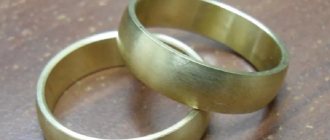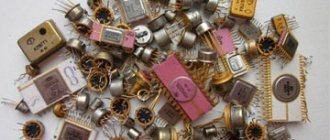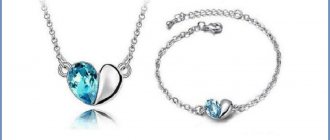The magic word that makes dreams come true does not only exist in fairy tales. It sounds simple - gold. At its core, it is an ordinary yellow metal, which is how it got its name. The question of how to mine gold interested people 7 thousand years ago, in the distant Neolithic era. It was then that it began to gain incredible popularity due to its color, which was associated with the sun and the power given by the gods. Nowadays, few people associate it with the inhabitants of heaven, but as a symbol of power and wealth, gold not only has not lost its meaning, but has also become the standard of economic, and with it, political independence of all countries.
Gold in nature
It is important to know not only how to mine gold, but also where it came from on our planet. The answer to this question helps you understand where to look for this coveted metal. Scientists suggest that gold is formed during the explosion of neutron stars, when tons of dust containing gold, along with other metals, are thrown into space. Subsequently, the dust concentrates, forming star systems and planets. So it was with our Earth. Now the bulk of the gold is in its molten interior and is thrown out “drop by drop” to the surface with lava. That is why gold-bearing veins, where gold can be mined relatively easily, are mainly located in places of post-magmatic and hydrothermal processes. Other igneous rocks, being lighter ones, are washed away over time, and gold remains in placers. The same thing happens with gold brought to Earth by meteorites. It can be found in pure form (gold nuggets), or in some minerals, for example, sulfides, arsenides and 15 others.
What rocks contain gold?
In most cases, aurum is found in intrusive massifs. These rocks were formed during the release of magmatic mass to the surface of the Earth. In addition to the precious metal, they contain copper, nickel, titanium, chromium, platinum group metals and other elements.
Quartz crystal is the main supplier of the precious metal. In addition, gold ore is found in quartz diorites and iron ore caps. The close occurrence of the noble metal is indicated by such rocks as pyrite, chalcopyrite, sphalerite, galerite, stibnite and some others.
You can also find small nuggets in the sand of mountain lakes. In this case, the gold particles resemble granules or look like small pieces of wire.
Based on its external characteristics, gold ore in placers is very easy to confuse with pyrite. There are two ways to determine whether a found placer belongs to a precious metal:
- Physical. The easiest way is to scratch the surface of the nugget with a thin needle. Pyrite or mica, unlike gold, quickly crumbles under mechanical stress, which can be seen through a magnifying glass.
- Chemical. If mining occurs in the field, it is not possible to conduct a thorough analysis; it is enough to place the found granule in a beaker with sulfuric acid. If you have a noble metal in front of you, no reaction will follow.
The precious element is found in granite no less often than in quartz, but according to the principle of extraction, this is the most complex and labor-intensive process. Special equipment and technologies are required.
Properties of gold
Before we tell you how to extract gold and from what, let’s get acquainted with its properties. This knowledge will help you not to lose a single milligram of precious metal during extraction. So, what are the properties of gold?
- It is very dense and heavy. A golden ball with a diameter of only 5 cm weighs a whole kilogram! This property is used in the main method of its extraction - washing.
- It is very plastic, soft, and, as a result, malleable. Gold can be used to make threads as thick as a human hair and translucent plates thinner than paper. This makes it possible to use it even in SIM cards!
- It can melt and boil, however, the temperatures must be quite significant. Important: in its molten form, even without waiting for it to boil, gold can quickly evaporate.
- It is unusually inert, that is, practically insoluble in acids (only in aqua regia and a few other solvents).
All these properties of gold are used in methods of its extraction both in nature and at home.
Artisanal gold washing technology
The simplest washing device is a tray, ladle or basin. The tray loading is 10-12 kg, one cubic meter of soil, on average, weighs about 200 kg, therefore, about 200 trays will be required to wash 1 m3. An experienced washer can skip approximately 600 kg of rock in 10 hours; fine cemented sand reduces this figure by 25%.
A simple and convenient washing device that significantly speeds up the washing process, in our opinion, is the Dengin Butara. Butara productivity in sands with good washability is 0.5 m3/hour. The average water consumption depends on the nature of the washed material; gold is captured almost completely, with the exception of the dusty fraction. The bulk of it remains in the upper third of the sluice on the beaver, the marks - in the middle part and single small grains - in the lower part.
As mentioned above, the easiest gold to extract is gold from river spits, which are located below large mines. Due to the ability of small gold floats to float, they are carried by spring waters down the river and after the flood waters subside, they remain lying almost on the very surface.
Gold is concentrated only in certain sections of river spits in places where fast currents give way to slow ones or where there are some obstacles that create various turbulences in the water. These surface spits are quickly mined, but after each flood their gold content is replenished.
The practical possibility of legal gold mining with the delivery of what is mined to the state now exists in Yakutia and the Magadan Territory (perhaps our information is outdated and not correct at the moment). This is roughly how things used to be in Yakutia. The prospector found out the address of the geological department in advance and paid a tax to the local authorities for obtaining a patent, which stated: “Type of business activity - prospector.” Then he went to the geological department, where he was allocated an allotment at the mine. For each “hundredth” of land in the mine, an additional fee had to be paid. The mined gold was handed over to the department that allocated the allotment, and for the gold handed over the miner was given money, if, of course, this department had money. A gold miner who worked without a license was punished administratively in the form of a fine and confiscation of the mined gold and mining means.
Where is gold mined?
There are several countries in the world to which nature has given gold deposits. These are China (the leader in gold mining), Australia, Russia, Canada, the United States, South Africa, once-Soviet Uzbekistan, Peru, Brazil, Mexico, Chile, Indonesia, Ghana and New Guinea. Gold mining is also carried out in other countries, but in too small quantities. Our country ranks third after Australia and China. Russian citizens are undoubtedly interested in where gold is mined in Russia. We have 37 companies engaged in this business. The leader among them is Polyus Gold. Almost 95% of the total volume of gold is located in the Far East, in the Amur, Krasnoyarsk, Magadan, Irkutsk regions, Chukotka, Khabarovsk Territory, Yakutia (Sakha), Buryatia, Transbaikalia, Chelyabinsk and Sverdlovsk regions. At the same time, the maximum production is carried out in the Krasnoyarsk Territory, and the maximum dynamics of its increase is observed in the Sverdlovsk and Magadan regions and in Chukotka. But in Transbaikalia, less and less gold is being mined. Among the mines and deposits are Kupol, Kyuchussky, Maysky, Karalveemsky, Vorontsovsky, Eldorado, Devil's Trough, Sukhoi Log and others.
Russian practice
In Russia, gold mining methods are now no different from those used in the rest of the world. This allows the state to confidently remain in the top five most producing countries, and at times reach fourth or even third place. Manual work is almost never officially practiced.
It is necessary to note the following features of Russian practice:
- The main development regions are Siberia, the North, the Urals, and the Far East. But aurum is also found in other regions, right up to the Moscow region.
- Development is mainly carried out by private companies that purchase licenses from the state. They also conduct deposit exploration. One of them that will produce up to 3 grams of Au per ton is considered quite profitable.
- Mining is carried out both in primary (primary) deposits and in alluvial (secondary) deposits. The first appeared due to volcanic activity, the second - due to natural processes: landslides, the appearance of ravines, landslides, and river movement.
- Industrial processes are mechanized. Even open-pit mining uses modern technology. But there is also room in the market for small artisanal artisans who can enter into an agreement with a licensed company.
- Artels often work on man-made dumps of mining plants and in abandoned quarries. Here, black miners who do not have any permits also practice at their own risk.
- Black miners have also long settled in the shallow waters of taiga rivers and hard-to-reach rocky outcrops. They work not only in the warm months, but also in winter, when the water level drops, and it is easier to notice Au on unfrozen shallows (as well as on rocks with less vegetation).
Gold mining is the work of direct specialists, geologist, scientists, explosives experts, and modern mechanisms. But in the Russian expanses there are also those who prefer to act alone and the old fashioned way, or armed with a basic metal detector.
Amalgamation
This is one of the oldest and most harmful methods of gold mining, officially prohibited in Russia, but used in other countries by our artisanal gold miners. It involves the use of mercury. How to extract gold by amalgamation? To do this, mercury is added to a plastic or glass tray containing sand and very fine fractions of gold. She will not dissolve the coveted metal, but will draw it into her balls. To help the process, you need to turn the tray, allowing the mercury to roll over the entire surface of the sand. Mercury beads containing gold are called amalgam. It is collected, separated from the sand and subjected to either treatment with hydrochloric acid, in which mercury will dissolve but gold will not, or by evaporating the mercury over a fire. This can be done in a simple frying pan. In acid, the gold freed from mercury settles in flakes to the bottom, after which it is thoroughly washed. If you don’t want to lose mercury, you need to dip a piece of foil into the acid. This simple technique allows the mercury to precipitate. You can extract gold from amalgam by simply filtering it through suede or tarpaulin, but in this case there is always a large loss of expensive metal.
What can this gold be used for?
Au mined in this way is used for various purposes. Most often, gold is sent for melting down, making jewelry from the material. The quality of jewelry depends on the quality of the metal obtained. If the refining was not very successful, then the alloy will not be distinguished by purity.
The ingot can be used as a material prepared for resoldering jewelry, that is, for repairing other jewelry. If a jeweler works with solder at home, the resulting material will help repair more than one item.
The resulting ingot can be handed over or sold. There isn't much difference. In the 90s, many chemists earned their living in this way. They dismantled old televisions and refrigerators and extracted gold through refining. In the technology of the USSR, there was more precious metal, for this reason refining was considered a very profitable activity.
Extracting gold from radio components is not difficult, you just need to try, and the process is exciting. Many people carry out the procedure not for profit, but for the sake of the refining itself, which brings pleasure. But there are also those who want to hold a whole piece or ingot of precious metal in their hands.
Flushing
This is the most ancient and environmentally friendly method based on the high density of gold. Flushing is used both in industrial mining and in individual mining at placer deposits. It consists of washing the rocks with water. In this case, all light particles are removed, and heavy particles, including gold, remain at the bottom of the tray. The disadvantage of this method is that too small particles of gold are washed out with water, significantly reducing its production. Some people are interested in whether it is possible for private individuals to mine gold. Yes, you can. Russia has passed a law allowing prospectors to work in small deposits and spent gold-bearing veins. To do this, you need to buy a license, which is valid for 5 years.
Choosing a metal detector for gold searching
Garrett At Gold
The device is a modification of At Pro, the legendary detector from Garret, which is specially designed for small targets. For this purpose, an increased operating frequency is used. It is completely waterproof: you can search at a depth of up to 3 meters.
Barbell
Equipped with a convenient telescopic rod that can be adjusted to suit any height. Fixation occurs using reliable collet clamps. There is a comfortable armrest.
Coil
The device is equipped with a Pro DD 14X20 or 22X28 coil, depending on the configuration. Supplied without protection. Operating frequency: 18 KHz. You can purchase additional coils from well-known manufacturers: Mars MD or NEL.
Control block
It has a convenient and compact unit with rubberized buttons. You can select three operating modes: DISK 1, DISK 2, AM. There are several modes of ground balancing and electrical noise canceling. There is a function that provides maximum depth: Motion Deepseeking Mode.
Runs on 4 AA batteries. One of the minuses is the lack of sound control.
Nokta Fors Gold
Detector from a Turkish company. Perhaps not as popular as Minelab or Garret, but not inferior to them in terms of search characteristics. Ideal for working in gold-bearing streams or waste deposits.
Barbell
Equipped with a lightweight balanced bar with an armrest. The rod has a handle on which there is a small display. It reflects information about the find. There is a button on the front and back: the first is used for ground adjustment, and the second is a depth check button. There is a built-in LED for night searching.
Coil
Comes with a 28.5x17.8 elliptical coil as standard. But there is a Pro package, which includes 3 coils. All of them are equipped with protection and are completely waterproof.
Control block
The block is located under the armrest of the detector. It has a display that shows all the parameters. Can operate in one of 3 search modes: General Search Mode, Boost Mode and Discrimination Mode 3. Has Pinpoint mode, ground tracking function and target depth indicator.
Minelab Eureka Gold
One of the most budget detectors designed for searching for gold nuggets. Powered by VLF technology with support for 3 frequencies: 60, 20 and 6.4 kHz. It has a good depth for medium nuggets: 15-20 cm. Among the disadvantages: it only works in clean places.
Barbell
The device is equipped with an ergonomic telescopic rod with a handle made of soft material. For convenience, an armrest is attached to the bar, which can be adjusted to the required length.
Coil
Equipped with a Minelab Goldsearch 10×5 DD elliptical coil. Main features: light weight and precise processing of the incoming signal. For deeper searches, Goldsearch 11 and 8 models are available. And the well-known company Coilteck, especially for this model, has developed a Gold Seeker coil, which is highly stable on highly mineralized soils.
Control block
The detector has a compact control unit without a display, which is mounted under the armrest. With it you can adjust ground balance, sound volume, discrimination, threshold tone. There are two operating modes: static and dynamic.
Minelab GPX 5000
The best metal detector for finding gold. Used by professional treasure hunters. It has many functions and flexible settings for any search conditions.
Barbell
The detector is equipped with an ergonomic rod with a soft armrest and a handle with a “Quick tracking” button.
Coil
The kit includes 2 coils with damage protection: 11 DD and Mono. They provide high stability and excellent detection depth. Especially for Minelab, Coiltek produces a wide range of coils. Among them there is even a record size: 20X40!
Control block
It is located under the armrest, but can be worn on the belt. Has a minimum of adjustments. But there are many pre-installed programs for all search conditions. You can connect headphones. Power is provided by a lithium-ion battery, the charge of which lasts for 12 hours of searching.
Cyanidation
This least labor-intensive method is based on dissolving gold in hydrocyanic acid. How to extract gold by cyanidation? It is necessary to crush the rock that contains the noble metal, pour it into a waterproof tray, and fill it with hydrocyanic acid, in particular sodium cyanide. It will begin to seep through the rock, dissolving the gold in the process. The resulting solution is poured into a separate container. The gold it contains is precipitated, for example, with zinc dust, and hydrocyanic acid is returned to the process.
Manual gold mining technology at home: electrolysis method
Another effective way to privately mine precious metals within the walls of your own home is the electrolysis method. It should be noted right away that this method is intended for obtaining yellow metal from mini devices - microcircuits, semiconductors, radio boards, SIM cards, and so on. This option is more labor-intensive than the previous one, but allows you to extract purer precious metal. The technology looks like this:
- Pour sulfuric or hydrochloric acid into an appropriate container.
- We lower two plates of lead or iron into the filled container. They act as a cathode, and the gold elements of microcircuits or other devices themselves will serve as the anode.
- We fasten the plates together with copper wire and connect them to electricity.
- We pass a current of up to 0.8 amperes per 1 dm2 through the circuit and immerse the prepared radio components.
- After all the yellow metal has moved from the anode to the cathode, we remove the plate from the container and begin to clean the gold, repeating the same process as when etching.
Attention! If the process is slow or gold is removed with large losses, it is necessary to change the amount of current supplied.
The described technologies are cost-effective – with a minimal investment you can achieve high profits. In addition, the process does not require full-time work, which allows you to combine it with your main place of work. No years of experience or special equipment is required either.
The only drawback is the risk of injury. But, observing safety precautions - the presence of an apron, rubber gloves, a respirator, the risk of causing damage to health is reduced to zero.
Flotation
This method cannot be called pure gold mining, but it significantly enriches the rocks and facilitates the further process. “Fleet”, “flotter” in translation, is what keeps afloat. It turns out that there are rocks that get wet well and settle to the bottom, and there are those that do not get wet, but are only enveloped in particles of liquid, like air bubbles, and thanks to this they “float” on the surface. This is flotation. It is used to extract gold from sulfide, gold-pyrite, gold-copper and some other minerals. The ore is crushed, filled with water and oil (for example, pine), and mixed. Gold particles float to the surface. In industry, instead of oil, they can use air passed through a mixture of water and crushed ore, and some other reagents. Further purification of gold is most often carried out by cyanidation.
Pros and cons of this business
If we put aside the legality of this process, then I highlight certain advantages:
- production does not require large expenses;
- the process is clear and uncomplicated;
- good payback;
- does not require a lot of time.
However, I also found some disadvantages:
- the reaction is unsafe;
- a large number of things are required to extract, which are not so easy to find;
- Obtaining a license to legalize a business is a rather labor-intensive and time-consuming procedure.
How to mine gold at home
The methods of industrial gold mining are, of course, interesting, but for most citizens they are not very practical. Not everyone can afford to go somewhere to Siberia, to abandoned mines. Yes, this is not necessary, because you can become a prospector without leaving the walls of your own apartment. How to mine gold at home? There are several methods. The easiest and most popular since the times of the Union is the extraction of noble metal from watches and other yellow products. It turns out that previously, using the inertness of gold, that is, its anti-corrosion properties, many metal objects were coated with it. Of course, the percentage of gold in them is small, but it is also small in rocks.
Thus, ore containing only 5-10 grams of gold per ton is considered rich. What should you do with your watch? First, collect as many of them as possible. Next, take an inert container (glass, plastic), put the watch there, fill it with nitric acid and wait until it dissolves everything except the gold. The resulting solution must be filtered through several layers of gauze, and the gold that has settled on it must be placed in vodka and allowed to stand for a day. You will get a brownish precipitate. Next, rinse it all thoroughly with water, filter again and set to melt. To make this last step effective, soda is added to the melting gold. It must be remembered that the desired metal can evaporate, but when melted, excess impurities leave it, and it itself turns into a small ingot.
Use of the received gold
Home-mined gold can be used in a variety of ways. At the same time, we should not forget that obtaining a permanent income in this way requires obtaining an appropriate license. In general, the following options stand out:
- Sale of gold bars or handing them over for sale. To achieve the desired appearance, they are polished using toothpaste applied to the rough surface of the metal with felt.
- Preparation of jewelry solder for repairing gold jewelry. This solder is made by mixing the resulting gold with various additives. For example, to repair products with 585 purity, the following solder recipe is used: gold - 585 parts by weight (parts by weight), copper - 185 parts by weight, silver - 116 parts by weight, cadmium - 112 parts by weight. For ease of use, solder is prepared in the form of a paste - tinol.
Jewelry making
At home, you can make various simple jewelry - earrings, pendants, rings, rings, chains. The most common method is casting into special molds. The resulting precious metal is melted in small containers with a spout. Heating to the required temperature is provided by a muffle furnace. Next, the melt is directed in a thin stream through the hole into the mold. If necessary, the metal is carefully forged. Making complex products requires a set of special jeweler's tools.
Mining gold at home, with your own hands, is a labor-intensive but completely doable process. The precious metal can be found in old radio equipment and various electronic devices. To extract it, chemical reagents are required, when working with which you must be careful. Gold lies idle nearby and can be mined without searching for a gold-bearing vein.
Gold from radio components
Gold is used in circuit boards and radio components due to its inertness and low electrical conductivity. How to extract gold from radio components and microcircuits? Aqua regia (a mixture of nitric and hydrochloric acids), which is prepared immediately before the process, is suitable for this. This infernal mixture dissolves gold at room temperature. There is even a historical example of dissolving gold medals in aqua regia to hide them from the Nazis. The process produces the chloraurate ion, to which sodium sulfide is added. The gold should precipitate. It is filtered, washed and melted into an ingot.
Before starting the dissolution process, you need to sort gold-containing parts from others. Next, you should try to remove as much as possible from the “correct” radio components everything unnecessary. Particular attention should be paid to metal parts, such as caps and legs. If possible, they should be collected with a magnet. Boards can be placed in a mixture of hydrochloric acid and hydrogen peroxide in a 2:1 ratio.
What can you get Au from?
Getting gold at home is a complex but exciting process. Some craftsmen manage not only to mine precious metals without leaving home, but also to sell it at a very attractive price.
Gold in radio components
You can make or, more precisely, extract gold from the following items:
- Computer parts.
- TV or refrigerator.
- Motherboards.
- Mobile phones.
You can extract metal yourself from old radio components, computer parts, microcircuits and motherboards. Phones and even SIM cards are used, but the percentage of gold content in SIM cards is negligible.
To make it clearer, it is worth noting that the surface of some parts that are used in the manufacture of equipment is coated with gold. You can also include jewelry that has been damaged or whose surface is covered with gold.
All products that are related to gilding and on the surface of which there is a layer of precious metal are suitable for processing.
There's gold in mobile phones
You will have to independently sort the material that requires processing. Sorting rules:
- parts are sorted by size;
- remove unnecessary elements;
- sort the material using a magnet.
Gold mining at home or, in other words, refining begins with sorting. Initially, the parts are sorted by size, laying them out in several piles.
If there are foreign elements on the surface of the products, they are removed; this rule also applies to solder.
The last stage is sorting the parts using a magnet. Those that the magnet attracts are set aside separately, separating them from those that do not respond to the magnet at all.
Since refining will be carried out at home, it is worth reducing costs. It is necessary to save reagents; sorting will help to do this. Once you've finished sorting the parts, you can start making reagents.
In addition to evaporation, you can obtain precious metal using the following elements:
- Mercury.
- Lead.
- Silver.
Mercury is converted to Au by the sun. Adolf Mitya somehow got the idea to experiment with minerals. He exposed them to a mercury lamp. Over time, a coating formed on the surface of the lamp; the chemist cleaned it off and analyzed it. There was gold in the raid.
Another Harvard scientist bombarded mercury nuclei with fast neutrons, in the process of which Au was obtained. All experiments were carried out in the laboratory, not at home, but they were successful.
Lead takes a long time to transform into a noble metal. This happens under the influence of the sun. Analysis of lead showed that when exposed to light from the sun, the element becomes radioactive and changes over the years.
Silver is transformed into Au according to the Mexicans, who believed that if a found vein is kept in the sun for several years, silver will turn into a yellow metal. The discovery did not receive scientific confirmation, but newspapers wrote about it. So the method can be considered dubious.
Evaporation can be done at home, but this will require reagents, without which the reaction will not take place.
Gold from water
Incredible, but true: gold is contained in any water, from which it can theoretically also be extracted. In what concentration is it contained there? It turns out that it is approximately 5 kg per square km, and in sea water it is several times more than in tap water. There is also a relatively large amount of gold in melt water flowing from the mountains and in silt sediment, especially mineralized ones. It is estimated that a ton of Red Sea mud contains approximately 5 g of gold. The main way to extract it is as follows: add quicklime to water, filter out the precipitate, pour the water back into the sea or river, and subject the sediment to further processing, for example cyanidation.
On an industrial scale
Manual work and artisanal mining have long been replaced by industrial methods. In the Russian Empire, this approach was applied for the first time in 1745. In almost two centuries, of course, the processes have been largely mechanized and automated, but the basic principles have changed little.
Chemistry to help
Obtaining Au from ore is possible by some chemical methods. The most famous of them are amalgamation, leaching, and flotation. Similar methods continue to be developed today.
Here are some features of chemical methods:
- Amalgamation with mercury is based on its property of enveloping aurum. Liquid metal is poured into the container, in which the ore is shaken. Au sticks to mercury. It is then removed by heating. Amalgamation was very common, then it was gradually abandoned.
- Leaching using sodium cyanide. First, Au is converted into compounds that are soluble in water. At the next stage, the precious metal is hardened. This method is still used today.
- Flotation. Initially, this method involved the use of pine oil, in which the aurum floated. Subsequently, air containing some additional elements was passed through the ore crushed in water.
The reason for abandoning mercury was its toxicity and the inability to completely isolate the precious metal from the rock. But leaching makes it possible to successfully process even secondary rock from ore dumps. It is also successfully used in old fields.
Modern dredges
Dredges provided almost complete mechanization of the extraction of yellow metal (and not only). These machines are equipped with mining, earth and water dredging and even processing equipment. They first found their main application in offshore, coastal, and ocean fields, then they moved deeper into the continents.
These mechanisms can be classified in different ways:
- Marine and continental. The first ones are used to work in sea and ocean mines. They are mounted on platforms or self-propelled vessels. The latter are used on rivers and shallow lakes. Both require high stability and buoyancy.
- Dredges also differ in the type of mechanisms (rotors, scoops, drive), capacity and power, extraction methods, and maneuvering capabilities and features.
- There are also so-called mini-drags. They are suitable for washing sand on river shallows. You can make such a device yourself, using a compressor, an air intake tank, an engine with a pump and a flushing chute. Buoyancy can be provided by empty containers, car tires or special plates.
With the help of dredges, both gold and tin, platinum and other metals are mined. But the use of such mechanisms does not benefit nature, spoils the ecosystem, and destroys landscapes.
Any industrial human activity has a negative impact on nature. Part of the funds for restoring the pristine ecosystems should also be allocated from the extraction of mineral resources (for example, gold), but in reality this does not always happen.
Virtual gold
For all gambling people for whom the gold mining process itself is important, computer scientists have come up with the game “Minecraft”, the goal of which is to become a successful gold miner after passing dozens of tests. How to get gold in Minecraft? You need to go through several levels, “work” as a miner, turn the mined ore into ingots, and only then use it to make, for example, battle armor. You can also look for the desired metal in ancient castles and dungeons, and “ask around” people you meet on the difficult roads of passing levels. This seems like empty fun to real gold miners, but the game Minecraft has conquered all continents except Antarctica, and brought its developers so much money that any gold miner would be jealous.











